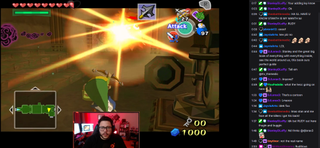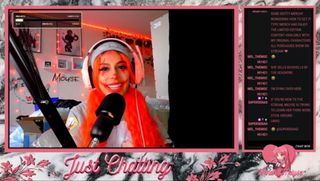It is better for students to create than just consume, says educator Rudy Blanco.
“We live in a world where folks are consuming a lot more than they are creating. It's either, ‘Like, share, or comment,’ but not many people are creating their own stuff to have others like, comment, and share,” says Blanco.
However, when students shift from content consumers to content creators, a whole new world opens up for them.
“Content creation is a career readiness skill,” Blanco says. For instance, by teaching students to live stream shows, they learn a variety of tech and interpersonal skills. These skills include video editing, audio production, art, marketing, and storytelling.
“Students don't want to go out and learn the skills individually,” Blanco says. “So if we can package it under, ‘Learn how to stream and create content for a live audience,’ you can then teach a bunch of skills that are career readiness skills.”
Blanco is the founder of The Bronx Gaming Network, an organization dedicated to creating inclusive communities centered around gaming, digital art, and content creation for underrepresented communities. In 2019, BGN launched its Content Creators Academy in order to inspire students to foster more BIPOC representation on the internet.
While the program is relatively new, several students are already living proof of what Blanco espouses.

Tech & Life Skills
Melyse Ramnathsingh, 22, is an alum of the Content Creators Academy. While she long dreamed of being an actor, she had difficulty with some interpersonal skills.
“I always struggled with talking to people,” she says. “Coming out of high school, I was scared to pursue acting because it's all about being in people's faces being in front of cameras. And that's really scary for someone who's not so social because I had to be social all the time.”
Learning how to create her own content on Twitch helped her overcome this, and the skills she learned streaming have translated to other areas. She’s been able to do more networking to advance her acting career. “It's kind of just opened me up because before I would just close myself off, and I wouldn't want to put myself in situations that were uncomfortable. But now I just proceed,” she says.
Sayeira “notSmac,” 15, another alum of Content Creators Academy, has also learned a good deal from creating her own content on her Twitch channel. While streaming she has connected with viewers from Australia, New Zealand, and elsewhere. Interacting with her audience has changed her perspective and granted her new understanding of various cultures, she says. It has also expanded her interpersonal skills.
“The biggest thing is that I'm more open-minded about people around the world,” she says. “I didn't really understand time zones until I started streaming. I was in a little box of America and American ways. And now I'm way more open-minded about everywhere else.”

Content Creation Advice for Educators and Students
Blanco is also the director of entrepreneurship and gaming programs at The DreamYard Project - BX Start, a Bronx, New York, organization that partners with local schools to help students achieve success through the arts. He says educators looking to mentor students on their content creation journey should:
- Remember that content creation does not need to be expensive. While students may be advised to get all sorts of fancy webcams, audio equipment, and lighting, most of them already have the equipment they need to get started streaming, such as a basic webcam and microphone.
- Choose the right medium. For example, he focuses on Twitch in his class because it is the easiest and quickest platform that students can monetize.
- Make sure students are old enough to navigate the internet’s sometimes toxic spaces. Blanco generally only offers his class for ages 16 and up, though sometimes, as in Sayeira’s case, exceptions are made.
Sayeira advises students to be positive while streaming, be prepared, and to be themselves. “People can tell if you're being fake,” she says. “It’s the most obvious thing. Even if you're not using a facecam, you can hear in their voices if someone's being fake.”
It’s also important to remember self-care. In an effort to stick to her streaming schedule, Ramnathsingh says early on she pushed herself to stream when she wasn’t in the right headspace.
“I would just be like, ‘Okay, I don't feel like streaming today, I don't feel mentally well,’ and I would force myself to do it, which was a mistake because then I would go and I wouldn't give people the energy I usually would. And then people would want to know what's wrong, and that's not something you want to talk about on a stream,” she says. “The biggest thing is take a mental break when you need it. It's always okay to take a break.”


